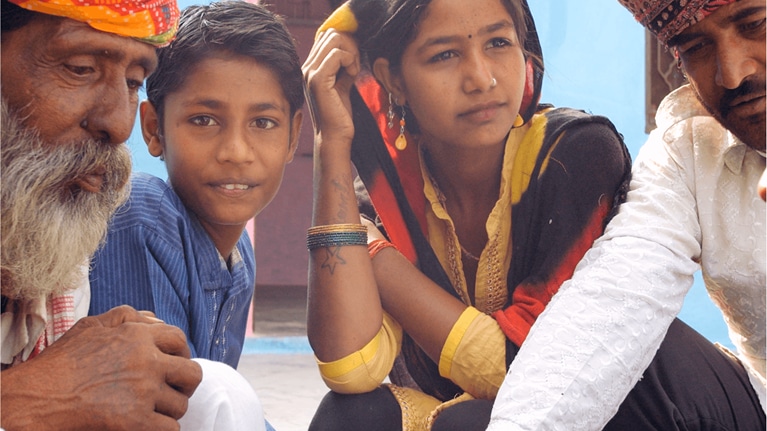Regardless of age, income, or geography, brain health materially affects every person’s life. Brain health conditions1 account for roughly 10 percent of global disease burden, comparable to all cancers combined.2 While previous McKinsey Health Institute (MHI) work has shed light on the reduction of total global disease burden,3 determining the potential impact of evidence-based prevention or interventions for mental and substance-use disorders to measurably reduce disease burden has been an ongoing issue.
MHI is looking closer at the challenge through a series of interactives on the burden of mental4 and substance-use disorders (for more, see the sidebar “Why is it important to examine brain health more closely?”). By highlighting the importance and opportunity of investing more in tackling these conditions, we advance the goal of “adding years to life and life to years” for people with or at risk for these conditions—especially because mental and substance-use disorders are highly treatable and often preventable.
The unit of this McKinsey Health Institute and Healthy Brains Global Initiative analysis is disability-adjusted life year (DALY), a measure commonly used in public health to quantify the burden of disease. It measures how many years of healthy life in an illustrative year are affected by the disorder, either by early mortality or by living a lower quality of life with the disease. (For more on our research, see the sidebars “Approach and methodology” and “What could it mean to reclaim one life year?”)
Additional details
- Our analysis finds mental and substance-use disorder burden represents about 15 percent of global disease burden.
- In addition to the primary burden of these conditions, there are co-occurring physical health conditions that derive from substance-use disorders (for example, cirrhosis from alcohol-use disorders) or mental disorders (for example, poor management of diabetes from depression) that we call “associated burden”—this represents an additional 150 million life years, or almost 5 percent of global disease burden, to the original estimates of primary disease burden (10 percent of global disease burden).
- With this holistic view of burden, mental and substance-use disorders are on par with cardiovascular diseases as one of the top three most burdensome conditions in our society.
In 2015, I was diagnosed with major chronic depression and psychosis. I was on the road to improvement after receiving electroconvulsive therapy [ECT] several times, but I had gained more than 40 kilograms because of all of the other medicines I was taking. This made it too dangerous to continue ECT and both my mental and physical health worsened. As I reflect upon my own journey, I believe mental health is highly intertwined with other facets of life, and to make effective change going forward, it needs to be looked at through the biopsychosocial model.
Additional details
- Even if society does not discover new drugs or adopt cutting-edge technologies, we have the potential to alleviate a considerable amount of burden worldwide by applying interventions that have well-established research and evidence around efficacy.
- There is not always a “silver bullet”: effective treatment will generally need an integrated view of interventions (physical and mental) across various intervention types (prevention or behavioral changes, psychotherapy, pharmacotherapy, and social support). In addition, what works for one individual may look different from another individual or even over time. It is important to break down barriers (for example, stigma, accessibility) and strengthen support systems.
- While research to quantify the effects of social support has been limited, social support is important because it helps provide a reliable, continuous structure of support for individuals as well as decreases isolation and loneliness (which has strong impact on outcomes).
- Tackling the remaining unaddressed burden requires both innovation in new treatments as well as a greater investment in prevention, promotion, and integration.
- Mental and substance-use disorders are as addressable as other conditions when it comes to achieving positive outcomes—view our “Scale what works: The benefits of proven interventions” interactive to see how this deep dive into brain health compares to other conditions.
I experienced a psychotic episode at the age of 35 which resulted in a hospital admission. Upon release, I was fortunate enough to receive over three years of Early Intervention Service support, which included a care coordinator, psychotherapy, medication, family support, and access to peer support. Thanks to a robust and early response, not only have I been able to recover but, more importantly, I also have been able to find meaning and purpose: I now work within mental-health services to improve outcomes for others.
Additional details
- While peak disease burden typically occurs around people’s 50s and 60s for other chronic conditions, mental and substance-use disorder burden peaks in the 30s, with nearly 90 percent of the peak reached in the 20s.5
- Although primary burden diminishes over time in the population (contributed by early mortality), associated burden continues to grow with age if not appropriately managed, emphasizing the importance of healthy brains on better longevity and overall quality of life through the lifespan.
- Earlier intervention and treatment can not only minimize considerable downstream burden in people’s 30s and onwards but are also more cost-effective (for example, preventive measures, school-based programs).
I struggled with severe depression while I was studying for medical school and even thought about ending my own life. As I attempted to get back on track, I not only realized stigma had forced me to suffer in silence but also that many others were experiencing similar struggles. After creating a peer support group to help other students, we learned how to open up to one another—I now feel control over my mental health (without even needing medication) thanks to my significant other, my spiritual network, my family, and my care team.
Conclusion
Mental and substance-use disorders often are common, preventable, and treatable health conditions that currently account for approximately 10 percent of the world’s disease burden. Viewed holistically—to account for associated, co-occurring conditions—the burden is even higher: about 15 percent.
By taking systemic action across multiple sectors, society could unlock over 150 million years of higher quality of life worldwide—just by scaling what exists today. In addition, there is a substantial opportunity to move upstream and focus on prevention and early intervention. While this may not happen overnight, if society makes the mindset shift to treating brain health conditions with the same urgency, skill, and compassion as other health conditions, these aspirations are within reach.
Author note: In this analysis, it is important to note the following: We recognize that clinical efficacy reported in academic journals is achieved in a controlled or specific setting and is often different from real-world effectiveness. Furthermore, we recognize that individual, community, and cultural differences can impact treatment preferences, engagement, quality, and outcomes. Inclusion in this tool does not imply an endorsement, nor may it be interpreted as an indicator of cultural appropriateness or effectiveness for all populations. The models included here represent only a subsegment of the possible universe of interventions, not a comprehensive and exhaustive set of interventions that exist for brain health. This analysis was designed to be a supplementary tool to guide discussions or be a point of reference for what might be possible, and not as a lone tool for key decisions such as creating policy or implementation plans.
If you or someone you know is experiencing a mental health crisis, please contact a crisis help line in your country (988 in the United States). To learn more about the Healthy Brains Global Initiative’s Lived Experiences, click here.

